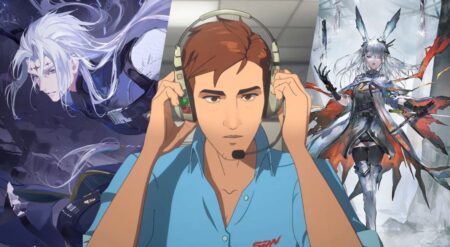
Spoilers for Star Wars Episode IX: The Rise of Skywalker
“A thousand generations live in you now. But this is your fight.”-Luke Skywalker
Star Wars has always been a series that deals with the concept of legacy. From Luke Skywalker learning about his father’s lineage as a Jedi Knight in the original trilogy to the fall of the Republic and the Jedi Order in the prequel trilogy, legacy looms large over the characters of the Skywalker Saga. This tradition extends to the sequel trilogy of films. Not only do The Force Awakens, The Last Jedi, and The Rise of Skywalker examine how the events of the original trilogy have impacted our new cast of characters, they also invert and challenge certain expectations of legacy and bloodlines.
From the beginning of the sequel trilogy, our main protagonist Rey and main antagonist Kylo Ren seem like updated versions of Luke Skywalker and Darth Vader, respectively. Rey is a girl struggling to survive in the desert wasteland of Jakku and discovers that she is strong in the Force. Ren is a Dark Side adept whose entire visage pays tribute to the fallen Vader. Yet the familiar is twisted as we learn their true origins: Ren is actually Ben Solo, the son of Han Solo and Leia Organa, and Rey is the granddaughter of Emperor Palpatine.
Ren makes for a compelling antagonist because while he is devoted to proving that he can live up to the legacy of his grandfather, he struggles to resist the call of the light, which is a brilliant inversion of what Anakin Skywalker went through on the path to becoming Darth Vader. He tries to suppress this light by killing his own father and his mentor Supreme Leader Snoke, but these choices only further stoke the fires of his tormented soul. It isn’t until his mother reaches out to him via the Force that Ren abandons his dark designs and returns to the light. Eventually, he ends up giving his own life to save Rey’s, unknowingly making the same sacrifice his grandfather did.
Rey also has a complicated legacy to grapple with; she grew up never knowing her parents and hoping that they will come back for her. As a result, she tends to look for fatherly figures in Han Solo, who takes a liking to her, and to Luke Skywalker, who has grown to hate his own legacy. In Rise of Skywalker, she grapples with the horrible truth that she is related to the embodiment of pure evil, and the darkness within her. This leads to her returning to the ancient Jedi temple of Ahch-To and resolves to cut herself off from the Force. However Luke returns as a Force Ghost to comfort her, telling her that her blood doesn’t define her.
Rey ultimately is able to defeat Palpatine and with him the legacy of the Sith. At the end of the film, she journeys to Palpatine, where an elderly woman asks her who she is. “Rey Skywalker,” is her response. With two words, she casts aside the legacy of Palpatine and embraces the people who trained her as her family. I’ve always believed that family doesn’t have to always be related to you by blood; there are friends who I consider to be as close as brothers and sisters to me. Rey has a similar bond with Finn, Poe, Leia, Luke, Han, and Chewbacca; they replace the family that she lost.

Another character who rejects the system he was born into is Finn. Stolen from his family and raised as a stormtrooper, in his first mission he refuses to gun down innocent villagers. Every action he takes in Force Awakens and Last Jedi is a rejection of the First Order’s regime: he rescues Poe from imprisonment, stands up to Kylo Ren, and sneaks back onto a First Order starship, eventually engaging his former commander Phasma in battle. When she calls him scum, he corrects her, proudly saying “Rebel scum.” Yet again, another character shakes off the yoke of darkness and embraces the light. This leads to Finn becoming more confident and courageous in Rise of Skywalker, and bonding with Jannah, a fellow First Order defector.
The character who most struggles with the weight of legacy in the Sequel Trilogy is Luke Skywalker himself. After the events of the original trilogy, Luke took it upon himself to train a new generation of Jedi including his own nephew Ben. Yet when he sensed the darkness in Ben, Luke grappled with whether or not to kill him which ended up being the tipping point that transformed Ben into Kylo Ren.
Ashamed, Luke cut himself off from the Force and his friends and family and is convinced that the Jedi must die. However, when Rey comes to him, and later, the ghost of Yoda, Luke learns that his failure does not have to define him and embraces his legacy, helping the Resistance escape. It’s a wonderfully layered look at the hero who this entire story was shaped around, and how he continues to matter, even if he isn’t the center of the story.
The Star Wars Sequel Trilogy not only serves as a continuation of the Star Wars universe, but it also showcases how characters can live up to or reject the legacy that their predecessors have left behind. Even though the Skywalker Saga has come to an end, it can serve as an example for future stories to honor and expand upon that legacy.







